Mastering Deep Sky Photography
January 09, 2024

In this blog post, we will give you some advice to get you started capturing photographs of the universe through your camera, from equipment selection to advanced techniques. Hope this guide will be your indispensable companion to deep sky astrophotography. So let’s get started!
What is Deep Sky Photography?
Deep sky photography is a specialized branch of astrophotography that focuses on capturing celestial objects beyond our solar system. These include nebulae, galaxies, and star clusters, revealing amazing details that are often invisible to the naked eye. Modern technology has enabled photographers to explore the universe from Earth, challenging the limitations of visual observation.
Basic Equipment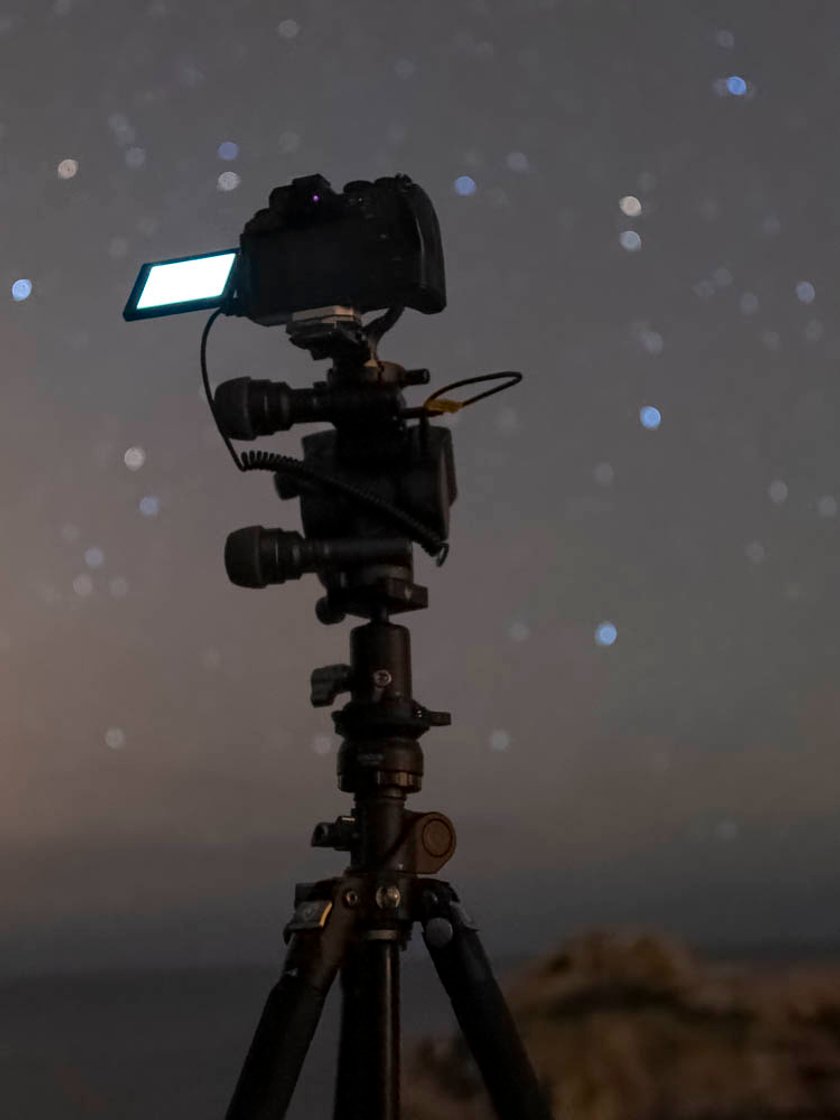
Recommended Cameras
The choice of camera is crucial in deep sky photography. Today, any modern camera performs very well in low-light situations. Cameras with full-format sensors or astronomical cameras modified to maximize light capture are recommended. Sensors with high performance, low light capabilities, and the ability to adjust ISO sensitivity are essential.
Perfect Lenses
Lens selection depends on the celestial objects to be captured. For large nebulae, wide-angle and low focal length lenses are preferred to cover a wide field. For galaxies and star clusters, longer focal length and aperture lenses are ideal for highlighting details. It is suggested to use lenses with low distortion and high optical quality.
Sturdy Tripod
In addition to specific equipment for astronomical imaging, a sturdy tripod is an essential piece of basic equipment. Although it may seem obvious, its importance should not be underestimated. A sturdy tripod provides stability and prevents shaking during long exposure imaging.
The tripod will not only support the camera and additional items but will also be crucial when working with long exposures and outdoor environments. It must be sturdy enough to support the total weight of the equipment, including the camera, lenses, and, in some cases, additional tracking systems.
Also, it is important to consider the tripod's ease of adjustment and leveling ability. These factors contribute to a quick and stable setup, allowing the photographer to focus on capturing images without worrying about the mount's stability.
Mounts and Sky Tracking
Robust and accurate mounts are essential for deep sky astrophotography. They allow you to compensate for the earth's rotational motion, enabling accurate tracking of objects in the sky. There are a multitude of options on the market that will allow you to choose according to your needs and budget.
This essential equipment plays a critical role in obtaining sharp, detailed images over long exposures. Let's explore the key features and considerations in more detail.
Types of mounts
Altazimuthal Mounts: Perfect for visual observations, these mounts are simpler and easier to use. However, for deep sky astrophotography, equatorial mounts are often preferred because of their ability to track accurately on a single axis.
Equatorial Mounts: Specially designed to compensate for the Earth's rotational motion, these mounts allow for more accurate tracking of celestial objects during long exposures. They are essential for deep sky astrophotography.
Weight Capacity and Stability
It is crucial that the mount can support the total weight of the equipment, including the camera, lenses, and any additional accessories. A sturdy and stable mount prevents vibrations and oscillations, contributing to sharper images.
Motorized and GoTo Mounts
Monturas Motorizadas: Automatic tracking capability is essential to compensate for the Earth's movement. Motorized mounts ensure smooth and accurate tracking throughout the entire photography session.
Monturas GoTo: These mounts, in addition to being motorized, have automatic tracking systems that allow the photographer to select celestial objects in a database, and the mount will automatically orient itself to them. This facilitates the search for and capture of specific targets.
Autoguider Systems
To further optimize tracking accuracy, many astrophotographers use autoguider systems. These systems use automatic guidance to adjust the mount in real time, correcting small deviations and improving image quality.
Portability and Quick Setup
Mount portability is important, especially for those wishing to perform deep sky photography in remote locations. Mounts that can be set up quickly and without hassle make it easy to prepare for astrophotography sessions.
Software and Connectivity
Many advanced mounts allow direct connection to astrophotography software, facilitating synchronization and control from a computer or mobile device. This streamlines setup and enhances the capture experience.
Selecting the right mount is one of the most critical decisions in astrophotography, as it directly affects image quality. Understanding the specific features and needs of each project allows photographers to optimize their equipment for exceptional results.
Deep Sky Filters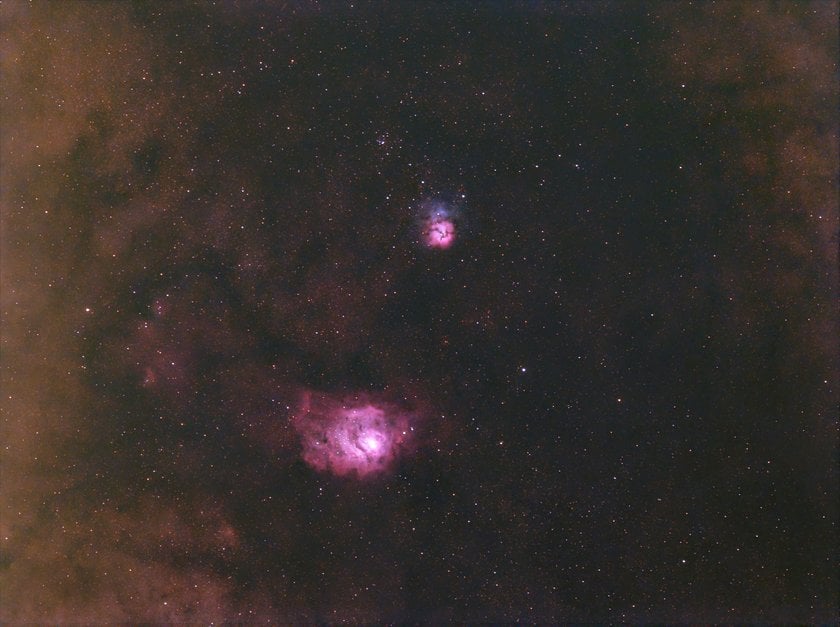
Astronomical filters can significantly improve image quality by reducing light pollution and enhancing contrast. Narrow-band filters, such as hydrogen alpha (H-α), oxygen (OIII), and sulfur (SII) filters, highlight specific nebular emissions, providing more vivid detail. In addition, broadband filters can help reduce light pollution generated by artificial lights.
Essential Accessories
Headlamp
A headlamp with red light is invaluable during astrophotography sessions, as it preserves the dark adaptation of the eyes. The red light is less intrusive and does not affect night vision, allowing the photographer to navigate the equipment and adjust settings without interrupting natural light exposure.
Heat Tape
In cold environments, the heat tape is a useful accessory to prevent condensation from forming on the camera lens. This is especially crucial on humid nights or in cold climates, where moisture can condense on the surface of the equipment.
Batteries and Additional Power
Having extra batteries and external power supplies is essential, especially in remote locations. Ensuring you have enough power for all your equipment, including cameras, mounts, and accessories, provides longer, smoother sessions.
Basic Tools
Tools such as screwdrivers, wrenches, and pliers can be useful for making quick adjustments or solving unexpected technical problems during the session.
Sky Reference Table
A sky reference table or an astronomy app on a mobile device can help identify and locate celestial objects, making it easier to compose images.
Camera Settings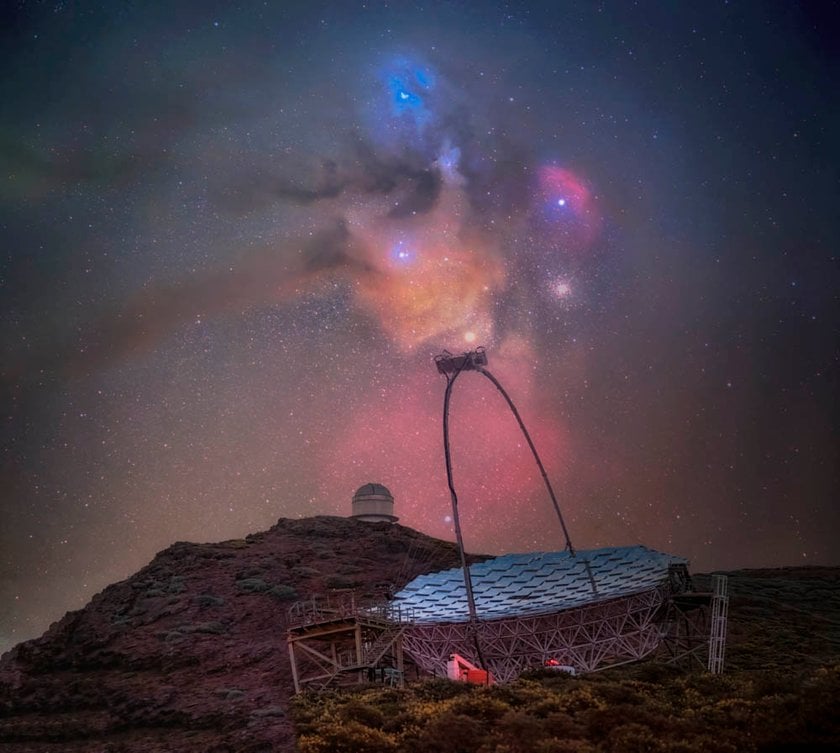
Exposure Settings
Exposure settings vary depending on the subject and viewing conditions. It is generally recommended to use long exposures to capture sufficient light, but the exact duration will depend on the lens aperture and ISO sensitivity. The "single exposure" or "image stacking" technique can be selected according to preference and the type of subject being captured.
Setting the White Balance
Setting the white balance is critical for accurate colors in deep sky images. It is suggested to set the white balance to custom mode and adjust it according to the specific lighting conditions during the astronomical photography session. This ensures that the colors of celestial objects are faithfully represented.
ISO and Noise in Astronomical Photography
The choice of ISO value is related to the sensor's sensitivity to light. To avoid noise in images, it is recommended to use as low an ISO value as possible. However, in low light environments, it may be necessary to increase the ISO. In these cases, cameras with good performance at high ISOs and noise reduction techniques during processing are essential to maintain image quality.
Accurate Focusing in Low Light Conditions
Accurate focusing is crucial for sharp images in astrophotography. It is recommended to use manual focus and, if possible, to make use of the camera's real-time focusing capabilities. Focus masks can also be used during post-production to highlight fine details and improve image sharpness. Practice and patience are key to perfecting this skill.
Photo Shoot Planning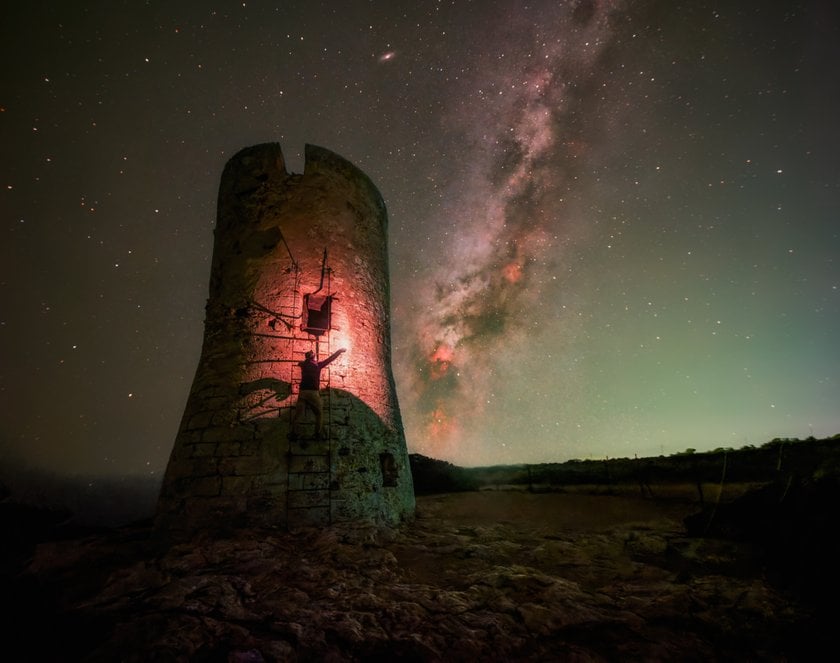
Site Selection and Weather Conditions
Choosing the right location for deep sky photography is essential to ensure dark skies and optimal viewing conditions. Looking for locations away from city lights, such as national parks or remote areas, helps minimize light pollution. In addition, considering altitude and weather conditions is crucial; locations with clear, stable skies offer the best opportunities for capturing sharp, detailed images.
Astronomy Planning Tools
Numerous apps and online tools make it easy to plan photo shoots. Applications such as Stellarium, SkySafari, and PhotoPills allow you to visualize the position of celestial objects at a specific time and location. They also provide information on moon phases, planet visibility, and other astronomical events, helping to plan photo shoots in advance.
Moon and Light Pollution Considerations
Moon phase and light pollution are critical factors that can affect the quality of deep sky images. Planning sessions during new moon phases or when the moon is below the horizon minimizes light interference. In addition, using specific filters to reduce light pollution from streetlights and other artificial sources improves image quality.
Establishing a strategy to work in conjunction with lunar cycles and choosing dates when the moon does not significantly affect the darkness of the sky is essential to maximize results.
Weather forecasting also plays a key role. Using online weather services and specialized apps provides information on cloud cover, humidity, and other factors that can influence astronomical observing quality.
Capture Techniques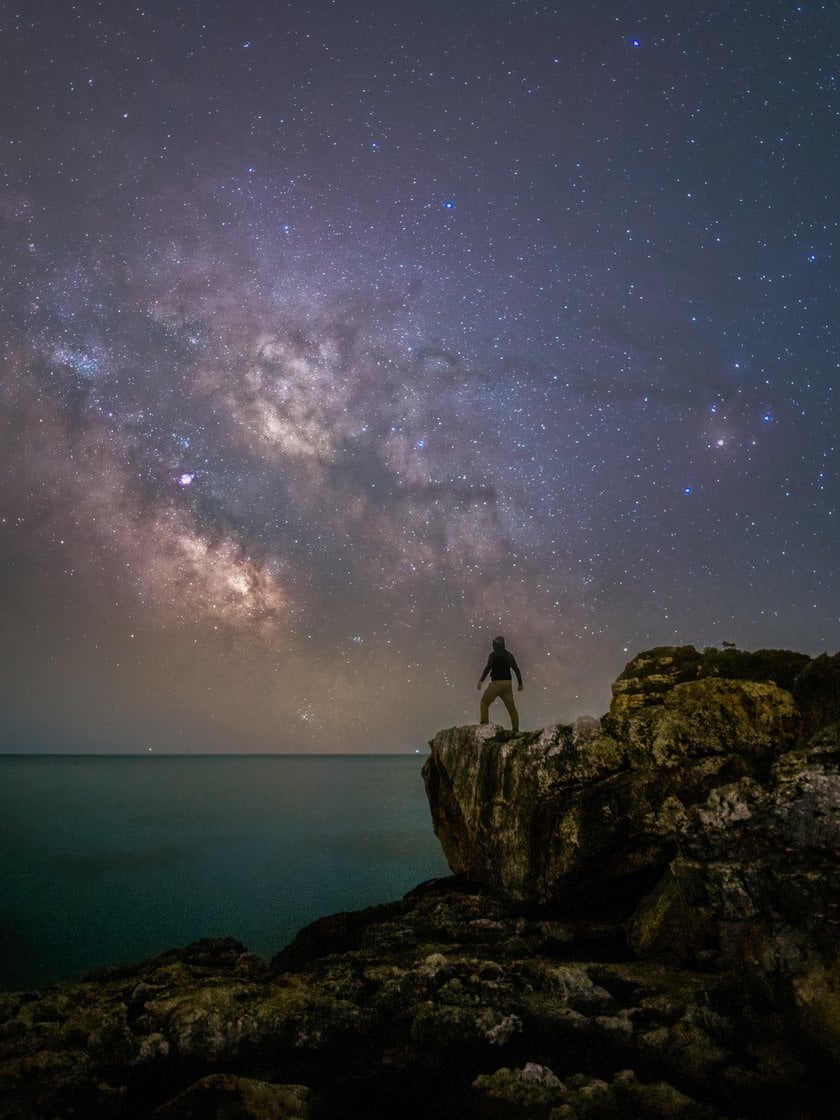
Single Exposure vs. Stacking Photography
The choice between photographing using single exposures or image stacking depends on the subject and the desired results. Single exposure photography is suitable for capturing brighter objects and obtaining immediate results. On the other hand, image stacking involves combining multiple photos to increase signal and reduce noise.
Capturing Calibration Images
Calibration images, including dark and flat frames, are essential for correcting imperfections and improving image quality. Dark frames capture thermal noise from the camera, while flat frames are correct for lens problems, vignetting, or smearing.
Dark Frames and Flat Frames in Astrophotography
Proper capture of dark frames and flat frames is crucial to ensure optimal results. Dark frames are taken with the same exposure settings as light frames but with the lens hood closed, thus capturing thermal noise. Flat frames are taken by pointing the camera at a uniform, bright light source, allowing optical imperfections to be corrected.
Image Processing
Deep sky image processing requires specialized software. Programs such as PixInsight, DeepSkyStacker, Astro Pixel Processor, or Siril, among others, are widely used. Each offers specific tools for calibrating, stacking, and enhancing astronomical images.
Once we have our images calibrated and processed, we can use Luminar Neo to finish to our liking.
Conclusions

Deep sky astrophotography is a fascinating discipline that combines science and art, taking us to explore the remotest corners of the universe from the comfort of Earth. As we have navigated this journey, we have explored several key aspects that contribute to mastering astronomical image capture and processing.
Achieving mastery in astrophotography requires not only specialized equipment and advanced techniques but also a thorough understanding of the unique challenges presented by this field. Careful equipment selection, from cameras and lenses to mounts and filters, is essential to get the most out of each photographic session. Meticulous planning of sessions, considering factors such as light pollution and moon phases, helps to create ideal conditions for capturing stunning images.
The key to success also lies in facing and overcoming common challenges, such as tracking issues, noise reduction, and light pollution management. These challenges, far from discouraging, offer opportunities to hone skills and apply creative solutions.
Image processing, a critical phase in the process, allows for highlighting details, enhancing contrast, and revealing the true beauty of celestial objects. With a combination of specialized software, advanced techniques, and patience, photographers can transform raw data into astronomical works of art.
Participation in online communities and the ongoing pursuit of knowledge through workshops and online resources are essential components for growth and evolution in astrophotography. Sharing experiences, receiving feedback, and learning from other enthusiasts enriches the experience and opens new perspectives.
Ultimately, deep sky astrophotography is a never-ending journey of exploration and discovery. Each session captures not only images of the cosmos but also moments of awe and connection to the vast universe around us. As we look up and pursue celestial wonders, we continue to move forward, ever eager to capture new fragments of the immense canvas of space.












